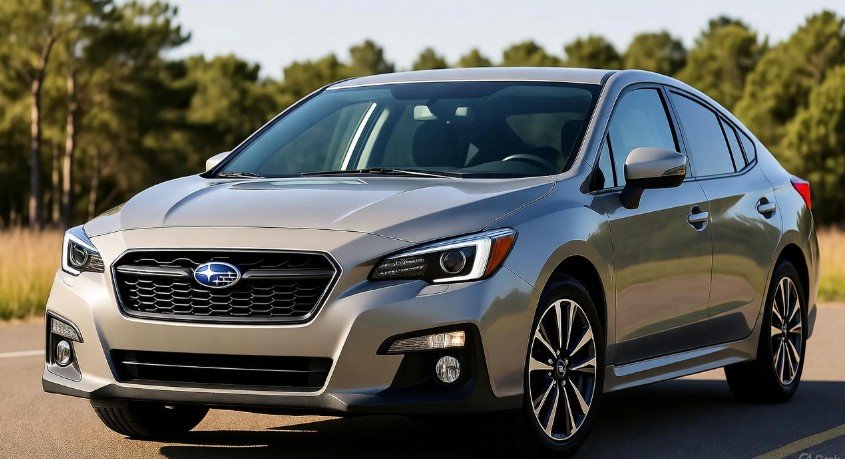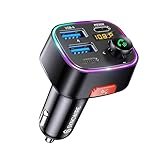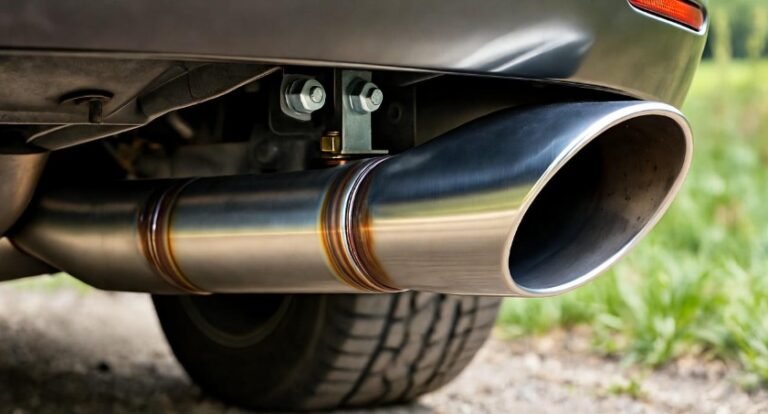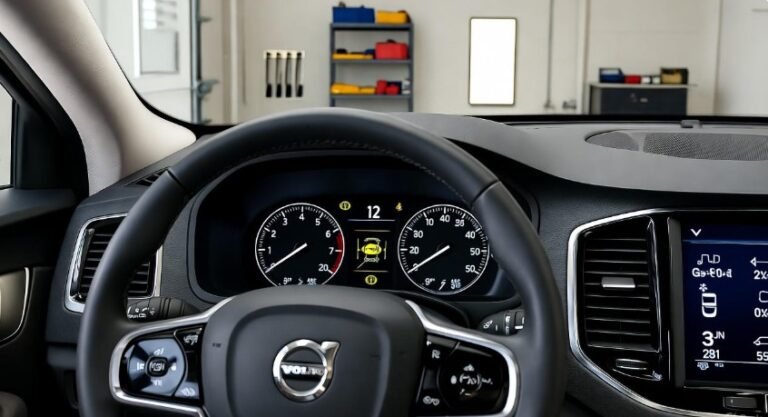What Does AVH Mean on a Subaru: A Complete Guide to Understanding

If you’ve ever sat behind the wheel of a Subaru, you’ve probably noticed several lights, buttons, and symbols that seem mysterious at first glance. Among them, one that often catches attention is “AVH”. Many new Subaru owners find themselves asking, “What does AVH mean on a Subaru?” It’s a small acronym, but it represents a big leap in driving comfort and safety.
In this article, we’re going to explore what AVH really means, why it exists, how it works, and why Subaru owners absolutely love it once they understand it. Think of this as your friendly, complete guide to making sense of Subaru’s All Vehicle Hold feature — a simple yet incredibly useful piece of technology that can make your everyday driving experience smoother, safer, and less stressful.
What Does AVH Mean on a Subaru?
The term AVH stands for All Vehicle Hold. It’s one of those features you may not fully appreciate until you experience it in action. Essentially, this system keeps your Subaru stationary without needing to hold the brake pedal when you’re stopped — whether at a red light, in a long drive-through line, or on a steep hill.
When you press the AVH button, the system activates and automatically applies the brakes after you’ve come to a complete stop. Once engaged, you can lift your foot off the brake pedal, and the vehicle stays still until you press the accelerator again. This small touch can make a huge difference in daily driving comfort.
The AVH system is part of Subaru’s larger commitment to innovation, often integrated with its advanced EyeSight driver-assist technology, which also includes features like adaptive cruise control and lane-keeping assist. Together, these technologies make driving not just easier but also safer and more intuitive.
How the AVH System Works: A Simple Explanation
Let’s imagine you’re waiting at a red light on a steep incline. In most cars, you’d have to keep your foot firmly pressed on the brake pedal to prevent rolling backward. But with AVH, your Subaru does the hard work for you.
Here’s how it works step-by-step:
-
You come to a complete stop.
-
The AVH system automatically detects the stop and holds the vehicle in place.
-
You can now lift your foot off the brake pedal without the car moving an inch.
-
When the light turns green, just press the accelerator, and the AVH system releases the brakes smoothly.
It’s like having an extra pair of hands — or in this case, an extra “foot” — to manage your brakes when you need a short break.
This system is particularly helpful in stop-and-go city traffic or when you’re navigating hilly terrain. It prevents unnecessary fatigue and adds a layer of control that can make your driving experience feel more relaxed and confident.
Why Subaru Added AVH: A Look Into the Brand’s Philosophy
Subaru has always been known for its safety-first engineering. From symmetrical all-wheel drive to EyeSight technology, the brand consistently focuses on reducing driver stress and improving control. The introduction of All Vehicle Hold fits perfectly within that philosophy.
AVH isn’t about flash or luxury — it’s about comfort, practicality, and safety. Think of it as Subaru’s way of saying, “We’ve got your back when the road gets tricky.”
In situations like waiting in traffic on an incline or creeping through crowded city streets, AVH prevents your vehicle from moving unexpectedly. This can be especially reassuring for new drivers or anyone who frequently drives in hilly areas.
Moreover, it shows Subaru’s dedication to continuous innovation. The AVH feature may seem small, but it plays a significant role in reducing driver fatigue and enhancing overall driving safety — two pillars of Subaru’s design philosophy.
Key Benefits of AVH in a Subaru
The AVH feature offers several real-world advantages that make daily driving far more pleasant and stress-free. Let’s look at some of the biggest benefits:
-
Enhanced Safety: AVH ensures your vehicle stays put, preventing rollbacks or sudden movements when stopped. This is especially valuable on steep roads or during heavy traffic.
-
Reduced Fatigue: No more keeping your foot glued to the brake pedal in long lines. AVH gives your leg a much-needed rest.
-
Convenience: With AVH engaged, you can focus more on what’s ahead rather than constantly monitoring your foot pressure.
-
Smooth Starts: When you press the accelerator, the transition from hold to drive is seamless — no jerks or awkward rolling.
In short, AVH adds a touch of calm to every stop, transforming tedious city drives into smoother experiences.
How to Activate and Use the AVH Feature
Using AVH in your Subaru is incredibly simple, even if you’ve never used it before. Here’s a quick, step-by-step breakdown:
-
Locate the AVH Button: It’s usually found near your gear shifter or center console.
-
Press the Button: When the system activates, you’ll see an AVH light on your dashboard.
-
Come to a Complete Stop: Once stopped, the system automatically applies the hold.
-
Relax Your Foot: You can release the brake pedal and rest your foot comfortably.
-
Accelerate to Move: The moment you press the gas pedal, the AVH system releases the brakes smoothly.
It’s that easy. However, remember that AVH automatically disengages when you turn off the engine, so you’ll need to activate it again after restarting your vehicle.
When and Where AVH Helps the Most
While the All Vehicle Hold system is useful in almost any situation, there are certain scenarios where it truly shines.
-
Hilly Areas: Whether going uphill or downhill, AVH prevents unwanted rolling, making it safer and easier to manage slopes.
-
City Traffic: In bumper-to-bumper situations, AVH keeps your car steady without constant braking effort.
-
Drive-Throughs and Stoplights: Perfect for times when you need short, frequent stops.
-
Parking Situations: When maneuvering in tight spaces or waiting for a spot, AVH adds a layer of control.
Essentially, AVH acts as a temporary parking brake, making short stops feel effortless and secure. Once you experience it, you’ll wonder how you ever managed without it.
AVH vs. Hill Hold: What’s the Difference?
It’s easy to confuse AVH with Hill Hold Assist, another braking-related feature found in many Subaru vehicles. While both systems help prevent rolling, they serve slightly different purposes.
| Feature | AVH (All Vehicle Hold) | Hill Hold Assist |
|---|---|---|
| Duration | Holds the vehicle indefinitely until you accelerate | Holds the vehicle for about 2 seconds |
| Activation | Activated by pressing the AVH button | Automatically activates on inclines |
| Usage | Works on flat roads and hills | Primarily for hills |
| Convenience | Ideal for city driving and stoplights | Meant for short hill stops only |
So, Hill Hold Assist helps in temporary situations, while AVH is designed for more flexible, everyday use. Subaru includes both systems because they complement each other perfectly — Hill Hold for steep slopes and AVH for general stop-and-go driving.
Subaru Models That Feature AVH
Subaru continues to expand the availability of the All Vehicle Hold system across its lineup. You’ll commonly find AVH in models such as:
-
Subaru Forester – Standard in higher trims.
-
Subaru Outback – Available on most trims with EyeSight technology.
-
Subaru Legacy – Comes standard in several configurations.
-
Subaru Ascent – Equipped across many trim levels.
If you’re planning to buy a new Subaru, chances are it already includes AVH as part of its advanced safety suite.
Common Misunderstandings About AVH
Many Subaru owners initially think AVH is just another name for a parking brake, but that’s not quite true. The parking brake is meant for longer-term use, like when you park your car and turn off the engine. On the other hand, AVH is designed for temporary stops — moments that last just seconds or minutes.
Another misconception is that AVH can replace proper driving control. It doesn’t. It simply assists you by holding the brake temporarily. The driver still has full responsibility for acceleration and braking.
Some also worry about wear and tear, thinking the feature might overwork the brake system. But Subaru engineers have built the AVH function to be light on your brakes — using controlled hydraulic pressure that minimizes stress on the components.
Is AVH Safe to Use All the Time?
Absolutely. Subaru designed the All Vehicle Hold system with safety as its top priority. It’s meant to be used regularly, especially in urban driving conditions. The system automatically disengages if you turn off your car or if it detects a potential malfunction, so there’s minimal risk of misuse.
However, drivers should always be aware of their surroundings. For example, on extremely slippery roads, relying solely on AVH might not be ideal — light brake pressure can sometimes offer more control. But for everyday use, it’s both safe and reliable.
Tips for Getting the Most Out of AVH
While the All Vehicle Hold (AVH) system is straightforward to use, understanding a few tips can make your driving experience even smoother. First, always ensure that your vehicle is at a complete stop before relying on AVH. The system is designed to activate only when the car is fully stationary; attempting to use it while rolling may not engage the brakes correctly.
Second, get familiar with the dashboard indicator light. When AVH is active, a small light appears on your instrument cluster, signaling that the system is holding your vehicle in place. This visual confirmation gives you peace of mind, especially when you’re stopped on a steep incline.
Lastly, practice using AVH in safe environments before encountering heavy traffic or hills. This simple exercise will help you understand the timing and responsiveness of the system, so it becomes second nature during your daily commute. Think of it as getting to know a helpful co-pilot — the more you practice, the more confident you’ll feel.
Troubleshooting AVH: Common Questions and Fixes
Even though AVH is designed to work seamlessly, there are occasional issues that Subaru drivers might encounter. Understanding these can save time and prevent unnecessary stress:
-
AVH Not Engaging:
Ensure your Subaru is completely stopped. Sometimes, slight motion prevents the system from activating. Also, check if your AVH button is fully pressed and the dashboard light is on. -
AVH Light Flickering:
A flickering AVH indicator may signal a minor sensor issue or low brake fluid. In such cases, it’s best to visit an authorized Subaru service center for a quick checkup. -
AVH Releasing Too Soon:
This can happen if the system detects unusual conditions, like icy roads. Always maintain awareness and be ready to use the brake pedal manually when needed. -
Compatibility Issues:
AVH is available on select Subaru trims, so older models or base trims may not have this feature. Check your owner’s manual or consult your dealer if you’re unsure.
By knowing these troubleshooting tips, you can prevent panic and keep driving safely without overthinking minor AVH quirks.
AVH vs Traditional Braking: Why It Feels Different
For drivers transitioning from older vehicles, the AVH system can feel unusual at first. Unlike traditional braking, where your foot constantly presses the pedal to prevent rolling, AVH allows you to lift your foot and relax. It’s like moving from a manual handbrake to an intelligent holding system — the car takes on part of the responsibility while you focus on the road ahead.
This difference might seem minor, but it significantly reduces fatigue in stop-and-go traffic. Imagine driving in a busy downtown area during rush hour. Traditional braking requires constant pressure on the pedal, which can tire your leg over time. With AVH, your foot rests, your leg relaxes, and your attention can shift to observing traffic and pedestrians, making the drive much more comfortable.
Subaru’s Commitment to Safety and Technology
The AVH feature is a perfect example of Subaru’s broader commitment to safety and technology. Alongside EyeSight, adaptive cruise control, and lane departure warning, AVH is part of a holistic approach to make driving more intuitive and secure.
Subaru doesn’t add features like AVH for flash; they add them because they make a tangible difference. It’s about reducing stress, improving control, and preventing accidents in real-world situations. Many Subaru owners report that once they start using AVH, it becomes a feature they cannot imagine living without, especially in urban areas or hilly regions.
By integrating AVH into multiple models, Subaru demonstrates that safety and convenience are not optional luxuries — they’re standard expectations for drivers today.
Frequently Asked Questions (FAQs) About AVH on Subaru
1. What Does AVH Mean on a Subaru?
AVH stands for All Vehicle Hold, a feature that allows your Subaru to stay stationary without holding the brake pedal. It improves safety, comfort, and convenience during short stops.
2. How Does AVH Impact Driving?
AVH reduces fatigue, prevents rollbacks, and makes stop-and-go traffic much easier. It allows drivers to focus more on the road and less on constantly pressing the brake.
3. Is AVH Safe on Steep Hills?
Yes. AVH is designed to prevent backward or forward movement on inclines. However, drivers should always remain aware of road conditions and use AVH alongside proper driving techniques.
4. Which Subaru Models Include AVH?
AVH is commonly found on Subaru Forester, Outback, Legacy, and Ascent, mostly in higher trims or models with EyeSight technology.
5. Can AVH Replace My Parking Brake?
No. AVH is meant for temporary stops, like traffic lights or drive-throughs. For long-term parking, always use the parking brake.
6. Does AVH Work in All Weather Conditions?
AVH functions in most conditions, but extreme weather, like icy or slippery roads, may require manual braking for added safety.
7. How Do I Know if AVH is Engaged?
Look for the AVH indicator light on your dashboard. It lights up when the system is active, confirming that your Subaru is held in place.
8. Does Using AVH Cause Brake Wear?
Not significantly. AVH uses controlled hydraulic pressure to hold the vehicle, minimizing stress on brake components. It’s safe for regular use.
Personal Experience: Why Subaru Owners Love AVH
Many Subaru drivers share stories of AVH being a game-changer for their daily commutes. For example, imagine driving in downtown traffic during a rainy morning. Instead of constantly worrying about rolling backward at intersections, the AVH system keeps the car steady. Drivers report less leg fatigue, reduced stress, and a more relaxed driving experience overall.
One Subaru Forester owner even described AVH as a “silent helper” that makes city driving feel less like a chore and more like a smooth, controlled experience. These anecdotes reinforce that AVH is more than just a feature; it’s a practical innovation that blends technology with everyday driving convenience.
Conclusion: AVH as a Symbol of Subaru Innovation
Understanding what AVH means on a Subaru goes beyond just knowing an acronym. It’s about appreciating Subaru’s dedication to safety, comfort, and driver-focused technology. The All Vehicle Hold system makes driving easier, reduces fatigue, and adds a layer of security that’s especially valuable in urban traffic and hilly terrain.
Subaru’s thoughtful integration of AVH, along with its suite of driver-assist technologies, demonstrates a clear philosophy: cars should work with the driver, not against them. Whether you’re a new Subaru owner or a seasoned driver, embracing AVH can transform your driving experience, making every stoplight, hill, or drive-through feel safer and more relaxed.
Next time you see that AVH light on your dashboard, you can smile knowing that your Subaru has your back — holding your vehicle steady while you focus on the road ahead.






